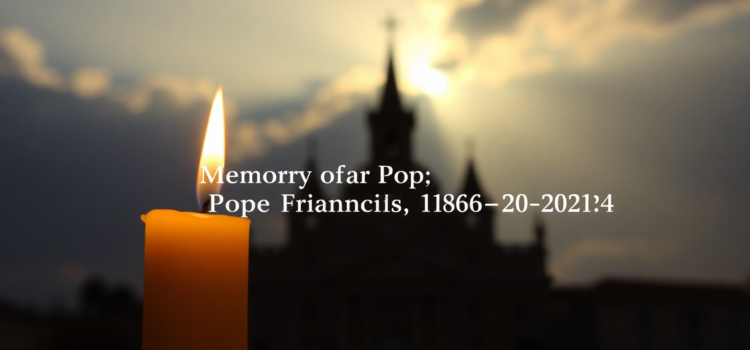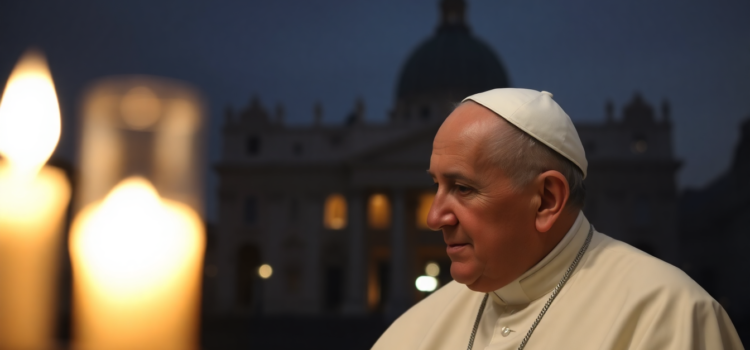
Pope Francis Dies at 88; Cause: Stroke and Heart Failure
The world mourns the passing of Pope Francis, the first Latin American pontiff, who led the 1.4 billion-member Catholic Church since 2013. His death news, confirmed by the Vatican, sent waves of sorrow across the globe.
Introduction
The Catholic Church is enveloped in mourning with the news of Pope Francis’s death at the age of 88. Confirmed by Vatican officials, Pope Francis, known for his humility and modern take on the papacy, succumbed to a cerebral stroke and irreversible heart failure on the morning of April 21, 2025, in Rome. This post aims to provide a detailed insight into the circumstances surrounding his passing, the official medical diagnosis, and the subsequent reactions from the global community.

Official Report on Pope Francis’s Passing
On Monday, April 21, 2025, at 7:35 a.m. local time, Pope Francis was pronounced dead in Rome. Vatican medical officials detailed that the official cause of death was due to a cerebral stroke that led to a coma and a cardiovascular collapse. The news that Pope Francis’s death was confirmed through electrocardiographic thanatography underscored the severity of his health crisis.
Pope Francis’s Pre-Existing Health Issues
Pope Francis had been enduring several chronic health conditions that likely contributed to his death. His struggle with chronic lung disease, high blood pressure, and Type II diabetes was public knowledge. Additionally, a significant part of his lung had been removed during his youth. In February 2025, he experienced a severe health episode involving double pneumonia, followed by acute respiratory failure, necessitating a five-week hospital stay—the longest of his papacy.
Pope Francis’s Last Public Appearances
Demonstrating his unwavering commitment to his faith and followers, Pope Francis made a final public appearance on Easter Sunday. He blessed thousands gathered in St. Peter’s Square, just a day before his untimely demise. Despite his declining health, this event marked a significant and poignant part of his final days timeline.
Funeral Arrangements and Burial Site
According to Pope Francis’s last wishes, he will be buried in St Mary Major Basilica in Rome. Breaking from tradition, this choice reflects his focus on simplicity and humility. The Vatican will host Pope Francis’s funeral arrangements, with public viewing at St. Peter’s Basilica. Details regarding the public mourning and papal succession remain forthcoming.
Global Reactions and Legacy
Reactions to Pope Francis’s death have poured in from world leaders and religious communities, underscoring his profound impact on the global stage. As leaders and followers of the Catholic Church reflect on his contributions, Pope Francis’s legacy as a reformer within the Church will continue to resonate. His passing leaves a profound void, prompting discussions on the implications for Vatican and papal succession.
Share your condolences and thoughts on the impact of Pope Francis’s papacy in the comments below or follow us for more updates on the funeral arrangements.
Conclusion
Pope Francis’s death marks the end of a significant chapter in the history of the Catholic Church. His life and service continue to inspire billions, from his humility and compassion to his efforts in bridging gaps within the Church. As Catholics around the world unite in prayer, the legacy he leaves will endure, prompting reflection and inspiration for future generations. l invite our readership to reflect on his lasting impact and contribute their thoughts on this platform.
FAQ
What was the cause of Pope Francis’s death?
The official cause of death, confirmed by Vatican medical officials, was a cerebral stroke that led to a coma and irreversible heart failure.
How old was Pope Francis when he died?
Pope Francis died at the age of 88.
Where will Pope Francis be buried?
As per his instructions, he is to be buried in a simple underground tomb at St Mary Major Basilica in Rome.
Did Pope Francis have pre-existing health issues?
Yes, Pope Francis had a history of chronic lung disease, Type II diabetes, high blood pressure, and part of his lung had been removed in his youth.
What impact did Pope Francis have on the Catholic Church?
Pope Francis is remembered for his humility and efforts to reform the Church, emphasizing compassion and modern approaches to age-old traditions.


















Comments